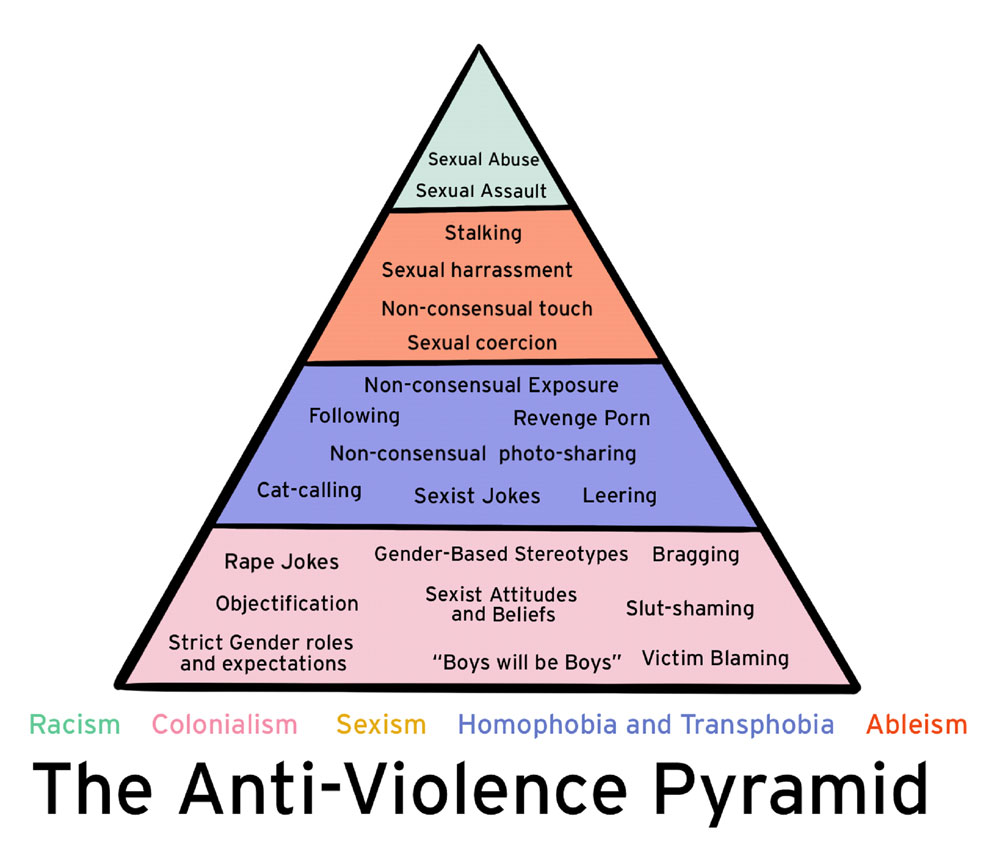Becoming an Ally: Being an Engaged Bystander
An important part of being an ally is also being an engaged bystander when you witness harassment, bullying or discrimination. Being an engaged bystander means you are able to empower the person experiencing harassment, while providing teachable moments to those engaging in it.
Becoming an Ally:
- Ally Is a Verb – it is an action not an identity.
- Begins when a person with intersections of privilege seeks to support a group or individual with different intersecting identities than their own.
- A practice of unlearning and relearning – acknowledging privilege and oppression exist
- A life-long process of building relationships based on trust, consistency, and accountability.
(Allyship Zine, PeerNetBC)
What can you do:
- Clarify and reflect on your values/beliefs & be aware of their impact
- Continue educating yourself – keep up to date
- Reflect on and change assumptions and biases
- Use inclusive, non-judgemental, gender-neutral language
- Connect people to support systems, role models, and resources
- Be an engaged bystander
(CPHA and Centre for Sexuality, 2020)
The 5 D’s
The five D’s are a tool to help you remember what to do when you witness harassment:
Detect: Recognize all forms of harassment, violence, and other forms of harm
Direct: Intervene in a direct and immediate way by stepping in.
Distract: Redirect/interrupt to remove focus from the affected party.
Delegate: Get help from someone else.
Delay: Follow-up with the affected person or relevant people after the fact.
DESC Communication Tool
Describe
Say what you observe.
Describe the other person’s actions and behaviour.
“When you…”
Express
Express how their actions and behaviour is impacting you,
Use feeling words.
“I Feel…”
Specify
Be specific about what change you need from them.
“I need…”
Clarify
Clarify benefits of the change – Find common ground.
“Then we can…” or “How do you feel about that?”
Want to know more? Our Training Centre provides bystander training workshops. Learn more here.


